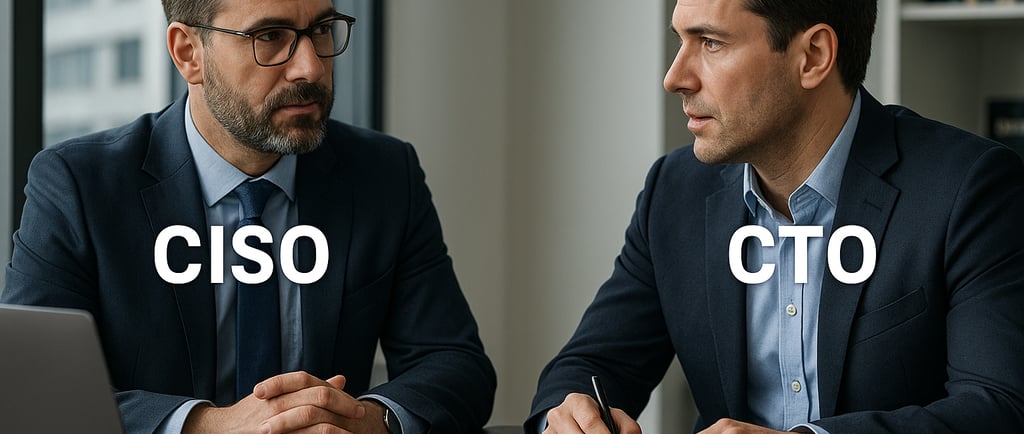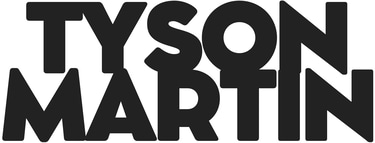Bridging CISO and CTO: A Framework for Unified Risk & Innovation GovernanceYour blog post
In many organizations, the Chief Information Security Officer (CISO) and Chief Technology Officer (CTO) operate on parallel tracks—both critical to the company's success, yet often at odds. One champions innovation velocity, the other guards against the missteps that come from moving too fast. This tension is not only common; it can be productive. But left unaddressed, it creates fractures in delivery, risk management, and trust.


Bridging CISO and CTO: A Framework for Unified Risk & Innovation Governance
In many organizations, the Chief Information Security Officer (CISO) and Chief Technology Officer (CTO) operate on parallel tracks—both critical to the company's success, yet often at odds. One champions innovation velocity, the other guards against the missteps that come from moving too fast. This tension is not only common; it can be productive. But left unaddressed, it creates fractures in delivery, risk management, and trust.
Imagine a product launch delayed for weeks because security wasn’t engaged early. Or a data breach traced back to a rushed deployment without adequate security review. These aren’t theoretical. They’re real-world scenarios that play out in organizations large and small. The underlying issue? A lack of structured collaboration between the people tasked with moving fast and those responsible for moving safely.
This post lays out a governance framework for unifying CISO and CTO priorities without forcing compromise. When done right, this partnership doesn’t just reduce risk—it enhances innovation, increases delivery speed, and builds enduring business trust.
The Organizational Gap
Traditionally, technology and security functions have evolved in silos. CTOs have focused on shipping features, optimizing performance, and scaling infrastructure. CISOs have emphasized protecting data, managing regulatory obligations, and defending against threats. Each has their own roadmap, KPIs, and communication channels.
In this model, friction is inevitable. Engineering teams may view security as a roadblock. Security may see engineering as careless. Product leaders feel caught in between.
This divide becomes more dangerous as businesses accelerate digital transformation. With DevOps, cloud-native architectures, and AI integrations, the pace of change is faster than ever. Security can no longer be an afterthought or bolt-on process. It must be embedded from the start—without slowing innovation.
The Business Imperative for Convergence
Modern enterprises face dual pressures: deliver faster and operate securely. Customers expect continuous updates. Regulators demand airtight controls. Shareholders want assurance that digital strategies won't expose the company to unacceptable risk.
Boards increasingly ask not just what was built, but how it was built. Was data protected? Were vendors vetted? Was privacy considered?
This makes CISO-CTO alignment not a "nice to have" but a strategic imperative. When technology and security leaders speak the same language, share goals, and co-own outcomes, organizations are better positioned to scale safely and sustain innovation.
A Practical Framework for Unified Governance
How can CISOs and CTOs move from conflict to collaboration? Through structured governance that recognizes each leader’s strengths and aligns them around shared objectives. Here's how to get started:
Joint Security-Engineering Councils
Establish regular forums where security and engineering leaders review product roadmaps, threat models, and incident learnings together. This fosters transparency, early alignment, and shared accountability.Co-Owned KPIs
Define success metrics that matter to both sides. Examples include secure deployment velocity, time-to-remediate vulnerabilities, and rate of security incidents in production. These KPIs drive behavior and incentives across teams.Shared Tooling and Processes
Integrate security into engineering workflows. Use CI/CD pipelines with automated security checks. Embed threat modeling into product design. Ensure developers have access to security guidance in real time.Unified Executive Communication
Present a single, coherent risk and innovation narrative to the board. Avoid conflicting messages that undermine credibility. Show how joint governance drives business outcomes.
Case in Practice: Secure Velocity in Action
Consider a mid-sized fintech that struggled with delayed product launches and mounting security exceptions. After forming a CISO-CTO steering committee, they implemented joint roadmap planning, co-led incident reviews, and aligned success metrics. The result? A 23% improvement in time-to-market, a 40% drop in unplanned security rework, and renewed confidence from both auditors and investors.
The lesson: when security and innovation walk together, velocity becomes sustainable.
The Trust Dividend
In today’s environment, trust is currency. Customers, partners, and regulators want to know that your innovation engine is secure by design. When CISOs and CTOs align, they create a powerful trust signal.
This trust goes beyond technical controls. It manifests in faster audits, shorter sales cycles, fewer compliance findings, and more resilient business operations. It enables organizations to pursue ambitious digital strategies without losing stakeholder confidence.
From Friction to Force Multiplier
Rather than viewing the CISO-CTO relationship as a tug of war, forward-thinking companies treat it as a strategic alliance. When structured through joint governance, shared KPIs, and integrated workflows, this partnership becomes a force multiplier.
Innovation doesn't have to mean insecurity. And security doesn't have to slow things down. With the right framework, CISOs and CTOs can lead together—faster, safer, and stronger.
Call to Action
If you're a security or technology leader looking to bridge gaps and build sustainable velocity, start with a governance assessment. Where are your silos? Where do incentives diverge? Then build the mechanisms to bring your functions into alignment.
For a tailored playbook on unifying security and innovation leadership, reach out via tysonmartin.com.
